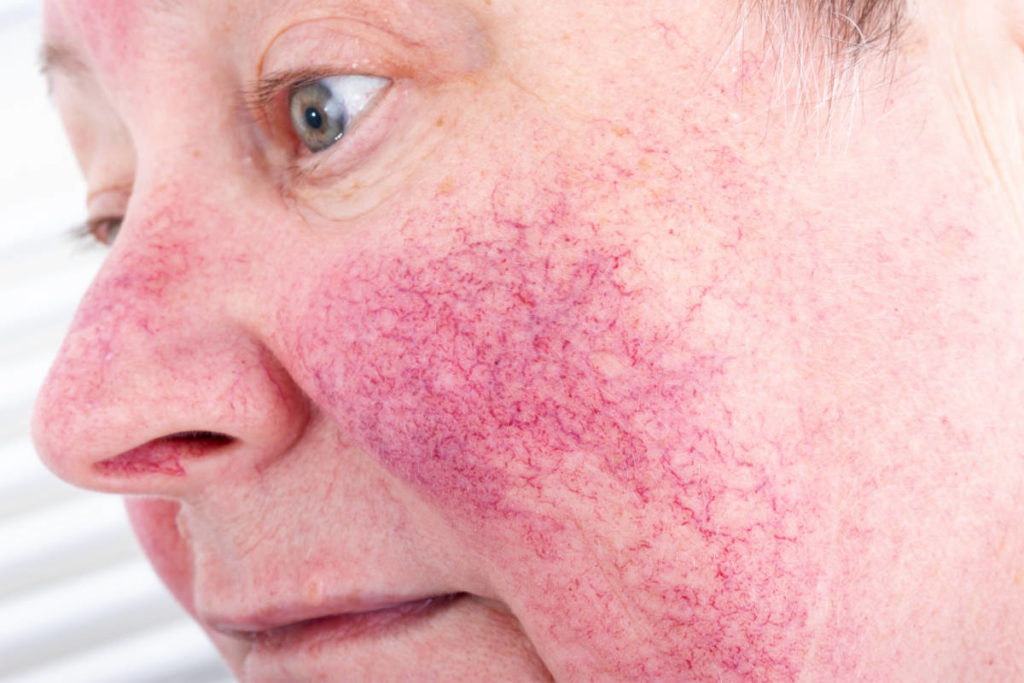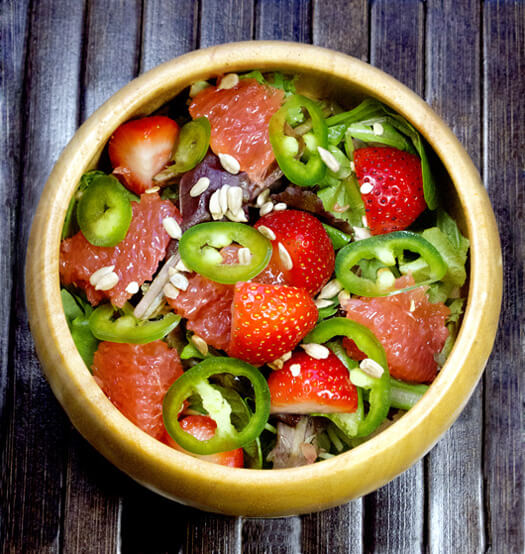What causes rosacea?
The most common complaint in my skincare clinic is either rosacea or adult acne.
There are two stages of rosacea – I am at stage one: my adult acne seems under control, but I worry that my underlying redness will develop into rosacea as menopause approaches.
What stage are you at?
Stage One Rosacea: Flushing
Blood vessels become extra sensitive to specific triggers, so let’s work out your triggers. Flushing is usually worse down the centre of the face, where the blood vessels are closer to the skin’s surface.
Please don’t ignore this stage because the blood vessels lose elasticity over time and become permanently swollen with blood.
Read more:
- Ten Years Younger in Ten Days: Controversial makeover show gets a makeover
- Teoxane 3D Lip Review
- Cleansing Oil Review: Medik8
Stage Two Rosacea: Permanent redness accompanied by lumps and bumps
Constant flushing stimulates the oil glands and irritates the follicles, leading to acne-like bumps around the inner cheeks and nose. (Adult acne, however, usually occurs along the jawline).

Rosacea triggers:
Try to avoid as many as possible:
Alcohol
Alcohol relaxes the blood vessels, so blood rushes to the skin’s surface – before you know it, you have a drinker’s nose. I am so proud of one of my clients who has recently stopped drinking red wine every evening, despite being under extreme stress. Now, she only drinks it on a night out.
- Extremes of temperature/outdoor lifestyle
Blood vessels constrict in cold weather to preserve heat, but when you go into the warm indoors, they relax, and blood rushes to the surface. Your confused skin can’t cope with the constant changes and eventually gives up and stays red.
- Sun
You can’t win: blood vessels open wide to cool us down in the hot weather, and the skin flushes red.
I try in vain to persuade all my clients to use sunscreen, which stops the release of inflammatory chemicals that aggravate rosacea. One client, in particular, was incredibly reluctant. We eventually found one that she liked: Skinceuticals Ultra Facial Defense SPF50, which calmed down her rosacea considerably.
- Overuse of multiple products
An increasing problem due to the popularity of layering multiple serums or luxurious day creams. Less is more! The skin can’t cope and becomes hypersensitive.
- Stress
One client’s skin became irritated following a stressful divorce. Initially, her GP thought that the tiny red pinpricks on her inner cheeks were dermatitis, but she didn’t have much faith in him or his diagnosis.
She waited to see a dermatologist who prescribed Ivermectin, an anti-inflammatory cream fast becoming the favourite treatment for rosacea.
It kills a common skin mite more prevalent in rosacea sufferers before it has a chance to irritate their overly sensitive immune system.
- Menopause
Skin becomes thinner during menopause, making blood vessels more visible. One client experienced little red bumps on her inner cheeks every time she had a hot flush. Neostrata Restore Facial Cleanser has calmed down the redness on the tip of her nose, which contains glucosamine to strengthen her skin’s barrier.
Adamantly against HRT, we are having some success using herbal remedies.
- Thin, sensitive skin
Sensitive skin is more prone to irritation from the elements, alkaline cleansers, grainy scrubs and anti-aging ingredients. Blood rushes with oxygen and immune cells to repair the damage, and the skin flushes red.
Avoid synthetic fragrances, alcohol, witch hazel, essential oils, acids and astringents.
- Teenage skin: sensitive and oily
Although most cases of rosacea occur over thirty, it can happen in teenage skin, sometimes combined with acne.
The sixteen-year-old niece (picture) of one of my clients has widespread acne on her cheeks, which is hard to treat because her skin is also dry and inflamed with rosacea.
Soap leaves her skin feeling tight (not surprisingly), so we used Neostrata Clarifying Facial Cleanser and Neostrata Sheer Hydration SPF35.
Her cheeks are now less dry, and we will keep an eye on the rosacea.
Read More:
- Low fat diets – Bad for your skin and waistline?
- Cleansing tips – How dirty is your skin?
- How to protect your skin over winter
- Cleansing oils – Have you tried one yet?
So how do we treat your rosacea?
That depends on how far advanced your rosacea is.
Treating Redness (Stage One Rosacea)
Over-the-counter skincare can calm irritation temporarily but can’t remove underlying redness. Visit your GP, who will prescribe topical inflammatories combined with a three-month course of antibiotics. Try the following non-surgical treatments:
- IPL: can be very effective at reducing redness (as long as there are no lumps).
- Lasers: a course can close capillaries in up to 50% of cases
Treating bumps (Stage Two Rosacea)
Upgrade to stronger antibiotics combined with prescription anti-inflammatory retinoids to treat both acne and rosacea
Which skincare should I use to treat my rosacea?
Rosacea can cause tiny cracks in the skin’s barrier, so moisture escapes and clients mistakenly believe that they have dry skin. Rich creams may feel soothing initially, but they do nothing to repair the barrier long-term and can even exacerbate inflammation.
Swap anti-redness products (designed for dry, eczema-prone skin) for light, hydrating products. Treat your skin as sensitive, even if your rosacea comes and goes.
Can diet improve my rosacea?
But skincare is only half the battle. You also need to address inflammation internally: eat plenty of nuts, seeds, vegetables and vitamin C, a natural antihistamine.
One of my clients will only take an antihistamine once a flare-up has started, which is too late. Strengthen your immune system with pre and probiotics, and try a cow’s dairy cleanse for a fortnight and see if your rosacea improves at all.
Let me know how you get on!



